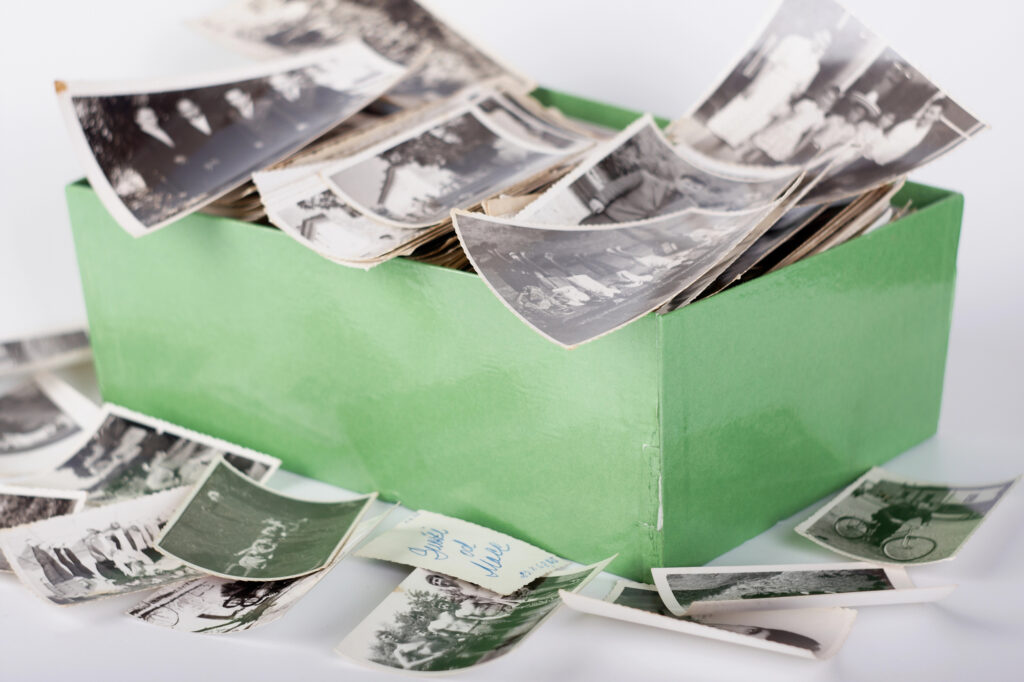Physical photographs are a vital part of our personal and family history. No matter how many digital formats come and go, the value of an actual photo has never been higher. They are precious assets for ourselves and our families and friends. Unfortunately, while most people today focus on mobile phones for pictures, our photographs may be stored in a manner that will accelerate their untimely demise. Knowing the conditions under which photos degrade can help you make important decisions about how and where to store them.
Common causes of photograph degradation
Photographs degrade over time due to a combination of environmental factors, the materials used in the photo, and the way they are stored. Here’s a breakdown of the main causes:
1. Light Exposure
- UV Radiation: Prolonged exposure to ultraviolet (UV) light, particularly sunlight, causes fading and discoloration of photographs. UV light breaks down the chemical bonds in the dyes and pigments used in photographic prints.
- Visible Light: Even visible light can cause some fading, especially in color photographs.
2. Temperature and Humidity
- High Temperature: Heat accelerates the chemical reactions that lead to the degradation of photographs. This can cause the emulsion layer to soften, resulting in fading or color shifts.
- Humidity: Excessive moisture can lead to the growth of mold and mildew on photographs. It can also cause the emulsion to become sticky, leading to damage like sticking to other surfaces or warping.
3. Airborne Pollutants
- Gases: Pollutants like sulfur dioxide, ozone, and other acidic gases can cause chemical reactions with the materials in photographs, leading to discoloration and fading.
- Dust and Dirt: Dust particles can scratch the surface of photographs and introduce contaminants that degrade the image quality.
4. Chemical Degradation
- Acidic Materials: Photographs stored in acidic materials, like certain types of paper or cardboard, can suffer from acid migration, leading to yellowing and brittleness.
- Oxidation: The materials in photographs, particularly in color photos, can oxidize over time, leading to color shifts, fading, and overall degradation.
5. Physical Handling
- Touching: Oils and dirt from fingers can cause damage to the emulsion layer, leading to fingerprints, smudges, and accelerated degradation.
- Bending and Folding: Physical stress can cause cracks, creases, and breaks in the emulsion layer, leading to permanent damage.
6. Biological Factors
- Mold and Mildew: In humid conditions, mold and mildew can grow on photographs, causing staining and degradation.
- Insects: Pests like silverfish or booklice may feed on the materials in photographs, leading to physical damage.
7. Poor Storage Conditions
- Inadequate Protection: Storing photographs in environments that expose them to the factors listed above (light, temperature fluctuations, humidity, pollutants) without adequate protection (like archival-quality storage materials) can lead to accelerated degradation.
Tips on how to protect photos and prevent degradation
- Store photographs in a cool, dry, and dark environment.
- Use archival-quality materials for storage, like acid-free paper and boxes.
- Handle photographs with clean, dry hands or use cotton gloves.
- Keep photos away from direct light and pollutants.
- Scan your photos into a digital application like PictureStudio so you can store an electronic copy indefinitely and print new versions if needed.






